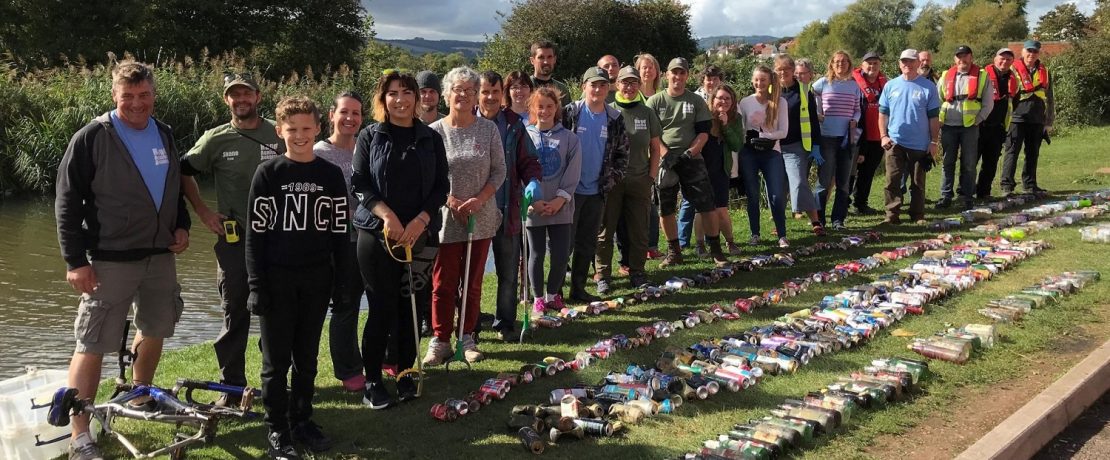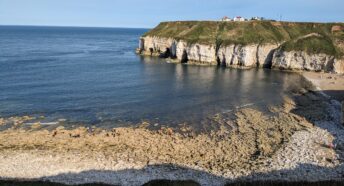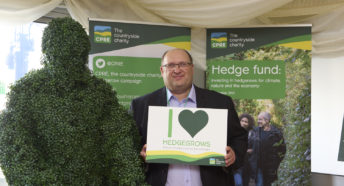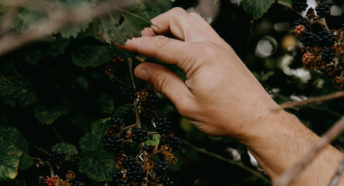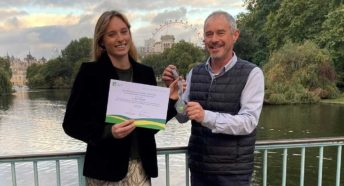Saluting our volunteers
Our new chair Simon Murray has spent his first six months getting to know some of the remarkable CPRE volunteers who’ve achieved so much in 2020, despite coronavirus. Here, he finds out how they’re engaging the next generation, making a tangible difference to communities, and even inspiring other volunteers.
It’s no exaggeration to say that most of the UK’s charities would not survive without volunteers, and CPRE is no exception. Our volunteers bring their life experience and knowledge to help our cause; they are passionate about the English countryside.
But it works both ways: volunteering can be fun and you get the satisfaction of using those skills to support something you believe in.
After 30 years working for the National Trust, I’m loving my volunteering for CPRE! And I’ve met some extraordinary and dedicated people along the way.
Volunteering, of course, can take many forms. Many of our volunteers help with our planning work; others sit on committees ensuring our charities are properly run. Increasingly, we’re welcoming volunteers with skills from social media to project management.
CPRE started as a volunteer movement back in 1926. It was largely the brainchild of the writer and master planner, Sir Patrick Abercrombie. He was our longest-serving chair (1938-57) and, although he couldn’t offer much time because of his professional commitments, he gave CPRE his visionary ideas for Green Belts and Town & Country Planning which have done so much to preserve our countryside ever since.
Celebrating the best of the countryside
His manifesto for CPRE – ‘The Preservation of Rural England‘ – even envisaged a vital role for CPRE volunteers, in creating comprehensive ‘rural surveys’ recording local history and amenities. They were to be combined as a sort of Domesday inventory of everything worth protecting in the countryside.
‘The propaganda value would be incalculable,’ Abercrombie felt. ‘It would let the citizen know what he possesses and it would stimulate him to help the public possess more.’
Several of CPRE’s early county groups ran with the idea on a grand scale, enlisting volunteers – from schoolchildren to professional cartographers – to produce magnificent hardback surveys. In 1932, The Times’ review of CPRE Devon’s county survey praised it for revealing the ‘cause of that intense pride in “Glorious Devon”’, noting that although so many Devonians ‘have sung the praises of their county … she deserves them all – and this survey shows anew how richly’.
I’m delighted that CPRE Devon has continued that tradition of celebrating and recording the best of the county’s heritage, most recently with their Devon’s Best Churchyard competition organised by volunteer and trustee Ivan Buxton. ‘It’s great to have convinced so many parishes that their churchyards can be people and wildlife-friendly,’ he says.
As a result, many of the volunteers advised and encouraged by Ivan are now adopting churchyard management plans, so that minibeast trails and composting corners can coexist with areas designed for quiet contemplation – often enhanced by ponds or wildflower meadows.
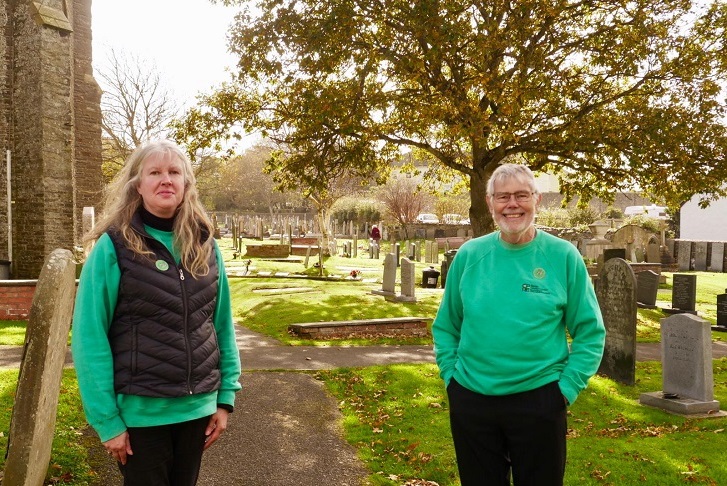
Above all, Ivan is delighted that the competition seems to have helped boost community spirit in many villages. ‘They’re always over the moon to hear they’ve won! The prize money helps of course, but that is usually reinvested into perhaps enhancing the churchyard even further – creating fruit and vegetable gardens or restoring cob walls for instance.’
Recognition for the project – including a live report by ITV news last year – has left Ivan keen to do more; at the time of writing, he was waiting for a response to his application for a £50,000 grant from the government’s Green Recovery Fund, which would allow CPRE Devon to initiate more community conservation activities.
Ivan leaves me to prepare a presentation on the importance of dark skies for Devon’s wildlife, for a Zoom webinar with renowned expert Bob Mizon, proving that CPRE volunteers have adapted to the ‘new normal’ and can hold their own with the best.
Bringing people together
Another of CPRE’s expert volunteers with a knack for bringing people together is Alasdair Forman. After working overseas for a long time (including an 8-year stint with WWF) Alasdair was keen to find a flexible volunteering role that would continue to support his passion for nature, becoming a trustee for CPRE Lancashire, Liverpool City Region and Greater Manchester in spring 2019.
He soon helped create an internship programme, so that two geography students at the University of Liverpool could use their learning on a brownfield mapping project.
‘Both were keen to continue to volunteer with CPRE after the internship ended,’ explains Alasdair. ‘Together with a third student, they have become a dynamic trio supporting us on social media and other communications!’
The third member of Alasdair’s trio is Amelia Furness, a marketing student who was keen to help spread the word about CPRE. Amelia initially offered to write an article for the CPRE Lancashire website on the wellbeing benefits of the countryside and has since been helping develop ideas for events and social media marketing.
‘I enjoy finding the best match between the volunteers’ interests and our priorities,’ says Alasdair. ‘Finding the ‘sweet spot’ where there’s a genuine win-win on both sides.’
‘Volunteering with CPRE is a great opportunity to gain experience in whatever you wish to pursue – my confidence has grown so much,’ confirms Amelia. Part of that experience came from helping Alasdair’s new team of events volunteers organise and promote a series of Green Belt walks to build awareness and support – including for the campaign to save Rimrose Valley Country Park from a new road.
‘I’ve really enjoyed getting out there to see some parts of our region for the first time,’ says Alasdair. ‘We look forward to resuming the events as soon as it is safe to do so!’
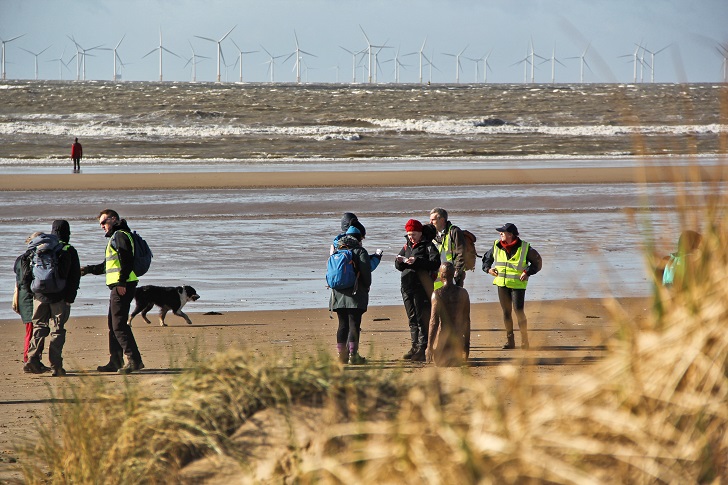
Alasdair’s fellow Lancashire trustee Des Brennan has been using his expertise in a very different way – to help provide the evidence-based case for CPRE’s campaign against fracking.
This former senior lecturer in physical chemistry at the University of Liverpool is an authority on shale gas extraction. In fact, I’m certain that the government’s decision to place a moratorium on shale extraction was influenced by Des’s arguments in relation to two high-profile fracking sites in Lancashire.
The moratorium followed a 2.9 magnitude earthquake in the county last August, and advice from the Oil and Gas Authority concurring with Des’s analysis that fracking could not be carried out safely.
‘Although the moratorium is a very welcome step in the right direction, it does not mean the threat of fracking is at an end,’ he warns. If and when developers try to revive the practice, I know we’ll be glad that Des is on our side.
Connecting with communities
Establishing credibility is also vitally important in CPRE’s efforts to improve access to green spaces for those affected by deprivation. This sort of work requires great sensitivity and the sort of trust that’s often best established by volunteers.
Lynne Roberts is a CPRE London volunteer at the Magpie Project in Newham East London – a charity providing support to mothers and their children who are at risk of homelessness.
‘The women are in temporary housing and living in poverty,’ explains Lynne. ‘So we developed the Growing Together project with funds from CPRE London to enable the small children and their mums to grow vegetables.’
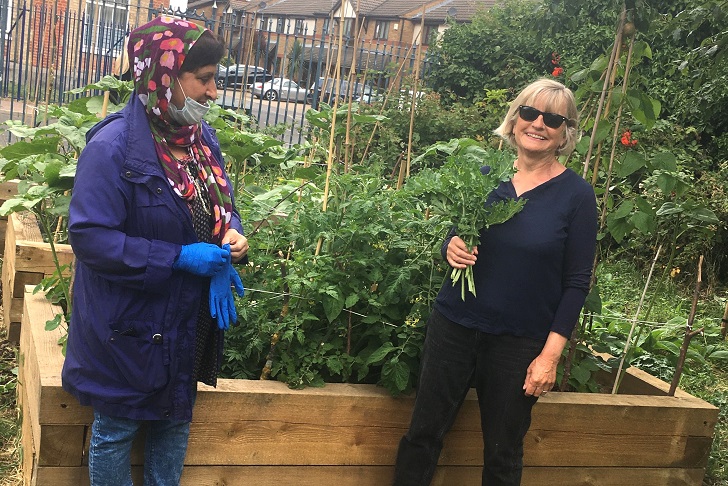
Before lockdown, CPRE national staff joined her in constructing raised beds in the Forest Gate Community Garden, planting fruit trees and bulbs to brighten up the space where the mums meet.
As soon as restrictions were lifted, Lynne was able to show the fruits of their labour to the families, who relished the chance to connect with nature and forget their worries for an hour or two. ‘It’s been delightful to meet so many amazing women and learn so much from them about growing food in other countries,’ she says.
Another hands-on volunteer is Mary Booth, chair of CPRE Staffordshire. She’s living proof that chairs do some of their most important work outside the boardroom, though admits the job seemed a little daunting at first: ‘I used to have the impression that you had to be landed gentry to take on such a role in the past!’
Mary is known for her skills with a spade, frequently supporting the local tree-planting initiatives that have always been a feature of CPRE Staffordshire’s work. During last winter’s National Tree Week, she joined local farmers to plant 60 native saplings for the benefit of wildlife and the villagers of Ranton.
‘That ticked a lot of boxes,’ she says. ‘Some secondary schoolchildren braved a very wet day to help, and bee-friendly trees were chosen as a beekeeper has hives on the land.’
Mary is hoping that normal service is resumed following the pandemic – especially for CPRE Staffordshire’s Green Schools Trophy. ‘Last year I visited the winners at Kingsmead Secondary School in Hednesford,’ she recalls. ‘They repaired the school pond to keep their 34 resident newts safe, set up a student Eco Group and rescued hedgehogs.’
Another recent winner invited Mary and colleagues back to talk about books on wildlife and the countryside, even donating the proceeds of their non-uniform day to CPRE Staffordshire. I sense that Mary can’t wait for the chance to bring some joy and recognition to another group of young environmentalists.
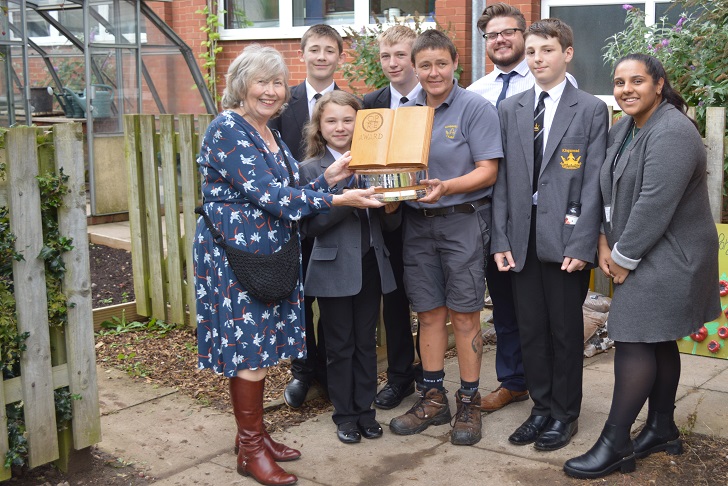
Lifting spirits in lockdown
Meanwhile, ‘My North Yorkshire during lockdown’ is the theme of another primary school competition, this time encouraging pupils to write about how local landscapes have helped lift their spirits.
‘The competition introduces CPRE North Yorkshire as a charity to younger generations – and by association their families,’ says volunteer and trustee Fran Evans. 2019 saw them receive over 700 entries waxing lyrical on the beauty and character of the county, later uploaded to their website to give these budding wordsmiths the thrill of being published.
‘Posting entries on social media then helps us attract new followers,’ confirms Fran, ‘and raises further awareness of CPRE and the beautiful North Yorkshire countryside.’
Back in my home county, the CPRE Gloucestershire Awards are a great way to celebrate the practical projects enhancing rural communities – from affordable housing to habitat creation. As with similar schemes around the country, it relies on a lot of hard work from volunteers.
‘This year’s restrictions scuppered our usual ceremony,’ says our chair of judges Richard Lloyd. ‘But I have had the pleasure of presenting the awards locally.’
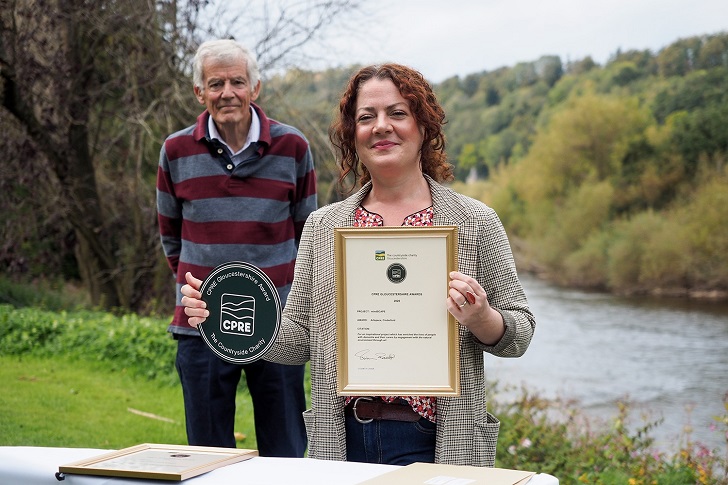
I fear he found the herculean task of responding to the county council’s Local Transport Plan (all 485 pages of it) slightly less enjoyable. ‘It was a slog, but worth it,’ Richard assures me. ‘Not many people get excited about transport policy, but for CPRE it should be high on the list of concerns if we are serious about sustainable development, tackling climate change and supporting our rural communities.’
That comment sums up our volunteers perfectly – they act on their concern for the future of the countryside. And as I hope I’ve shown here, CPRE gives them the platform to do something about it in ways that are hugely rewarding, for themselves and others. But we need many more volunteers if we are to capitalise on the surge in enthusiasm for the countryside we’ve seen in 2020, and overcome the many challenges it faces. With our strategic plan committed to increasing support for volunteers, and a friendly team waiting to welcome you, there has never been a better time to get involved.
Please visit cpre.org.uk/volunteering today, to see what opportunities are available near you.
Simon Murray was elected chair of CPRE’s board of trustees in June 2020. He is a former director of the National Trust and has been a volunteer for CPRE in the Forest of Dean for a number of years.
This article was originally published in CPRE’s award-winning magazine, Countryside Voices. You’ll have Countryside Voices sent to your door three times a year, as well as access to other benefits including discounts on attraction visits and countryside kit from major high street stores when you join as a CPRE member. Join us now.
